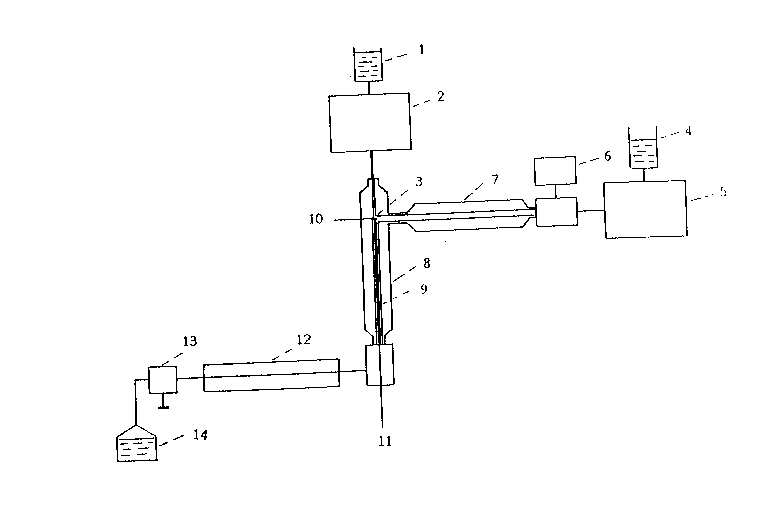Une partie des informations de ce site Web a été fournie par des sources externes. Le gouvernement du Canada n'assume aucune responsabilité concernant la précision, l'actualité ou la fiabilité des informations fournies par les sources externes. Les utilisateurs qui désirent employer cette information devraient consulter directement la source des informations. Le contenu fourni par les sources externes n'est pas assujetti aux exigences sur les langues officielles, la protection des renseignements personnels et l'accessibilité.
L'apparition de différences dans le texte et l'image des Revendications et de l'Abrégé dépend du moment auquel le document est publié. Les textes des Revendications et de l'Abrégé sont affichés :
| (12) Demande de brevet: | (11) CA 2042029 |
|---|---|
| (54) Titre français: | UNE METHODE DE PREPARATION DE 3-HYDROXYESTRA-1,3,5(10)-TRIEN-17-ONE |
| (54) Titre anglais: | PRODUCTION OF 3-HYDROXY-1,3,5(10)-ESTRATRIEN-17-ONE |
| Statut: | Réputée abandonnée et au-delà du délai pour le rétablissement - en attente de la réponse à l’avis de communication rejetée |
| (51) Classification internationale des brevets (CIB): |
|
|---|---|
| (72) Inventeurs : |
|
| (73) Titulaires : |
|
| (71) Demandeurs : |
|
| (74) Agent: | MARKS & CLERK |
| (74) Co-agent: | |
| (45) Délivré: | |
| (86) Date de dépôt PCT: | 1990-09-06 |
| (87) Mise à la disponibilité du public: | 1991-04-04 |
| Requête d'examen: | 1997-03-27 |
| Licence disponible: | S.O. |
| Cédé au domaine public: | S.O. |
| (25) Langue des documents déposés: | Anglais |
| Traité de coopération en matière de brevets (PCT): | Oui |
|---|---|
| (86) Numéro de la demande PCT: | PCT/DE1990/000690 |
| (87) Numéro de publication internationale PCT: | WO 1991004264 |
| (85) Entrée nationale: | 1991-05-17 |
| (30) Données de priorité de la demande: | ||||||
|---|---|---|---|---|---|---|
|
ABSTRACT
A process for producing 3-hydroxy-1,3,5(10)-estratriene-17-on by
the pyrolysis of 1,4-androstadiene-3,17-dion in the presence of
1,2,3,4-tetrahydronaphthaline as a hydrogen donor is described,
in that one mixes 1,2,3,4-tetrahydronaphthaline that has been
pre-heated to a temperature of 450-850°C in a mixing zone with a
solution of 1,4-androstadiene-3,17-dion in 1,2,3,4-
tetrahydronaphthaline that has been heated to a temperature of up
to 300°C, then heats the mixture in a pyrolysis zone during a
holding time of 0.001 to 60 seconds to a temperature of 450-
700°C, and then cools the product that emerges from the pyrolysis
zone, characterized in that one carries out the pyrolysis at a
pressure of 3.5 x 106 to 3 x 108 Pa.
Note : Les revendications sont présentées dans la langue officielle dans laquelle elles ont été soumises.
Note : Les descriptions sont présentées dans la langue officielle dans laquelle elles ont été soumises.

2024-08-01 : Dans le cadre de la transition vers les Brevets de nouvelle génération (BNG), la base de données sur les brevets canadiens (BDBC) contient désormais un Historique d'événement plus détaillé, qui reproduit le Journal des événements de notre nouvelle solution interne.
Veuillez noter que les événements débutant par « Inactive : » se réfèrent à des événements qui ne sont plus utilisés dans notre nouvelle solution interne.
Pour une meilleure compréhension de l'état de la demande ou brevet qui figure sur cette page, la rubrique Mise en garde , et les descriptions de Brevet , Historique d'événement , Taxes périodiques et Historique des paiements devraient être consultées.
| Description | Date |
|---|---|
| Demande non rétablie avant l'échéance | 2002-09-06 |
| Le délai pour l'annulation est expiré | 2002-09-06 |
| Réputée abandonnée - omission de répondre à un avis sur les taxes pour le maintien en état | 2001-09-06 |
| Inactive : Taxe finale reçue | 2001-06-26 |
| Préoctroi | 2001-06-26 |
| Un avis d'acceptation est envoyé | 2001-01-25 |
| Un avis d'acceptation est envoyé | 2001-01-25 |
| Lettre envoyée | 2001-01-25 |
| Inactive : Approuvée aux fins d'acceptation (AFA) | 2001-01-04 |
| Modification reçue - modification volontaire | 2000-07-12 |
| Inactive : Dem. de l'examinateur par.30(2) Règles | 2000-01-14 |
| Inactive : Renseign. sur l'état - Complets dès date d'ent. journ. | 1998-07-23 |
| Inactive : Dem. traitée sur TS dès date d'ent. journal | 1998-07-23 |
| Exigences pour une requête d'examen - jugée conforme | 1997-03-27 |
| Toutes les exigences pour l'examen - jugée conforme | 1997-03-27 |
| Demande publiée (accessible au public) | 1991-04-04 |
| Date d'abandonnement | Raison | Date de rétablissement |
|---|---|---|
| 2001-09-06 |
Le dernier paiement a été reçu le 2000-08-29
Avis : Si le paiement en totalité n'a pas été reçu au plus tard à la date indiquée, une taxe supplémentaire peut être imposée, soit une des taxes suivantes :
Veuillez vous référer à la page web des taxes sur les brevets de l'OPIC pour voir tous les montants actuels des taxes.
| Type de taxes | Anniversaire | Échéance | Date payée |
|---|---|---|---|
| Requête d'examen - générale | 1997-03-27 | ||
| TM (demande, 7e anniv.) - générale | 07 | 1997-09-08 | 1997-08-27 |
| TM (demande, 8e anniv.) - générale | 08 | 1998-09-08 | 1998-08-24 |
| TM (demande, 9e anniv.) - générale | 09 | 1999-09-06 | 1999-08-27 |
| TM (demande, 10e anniv.) - générale | 10 | 2000-09-06 | 2000-08-29 |
| Taxe finale - générale | 2001-06-26 |
Les titulaires actuels et antérieures au dossier sont affichés en ordre alphabétique.
| Titulaires actuels au dossier |
|---|
| SCHERING AKTIENGESELLSCHAFT |
| Titulaires antérieures au dossier |
|---|
| HANS-PETER VOGELE |
| JOSEF HADER |
| MICHAEL BUBACK |
| ZAKARYA AL-MASSRI |